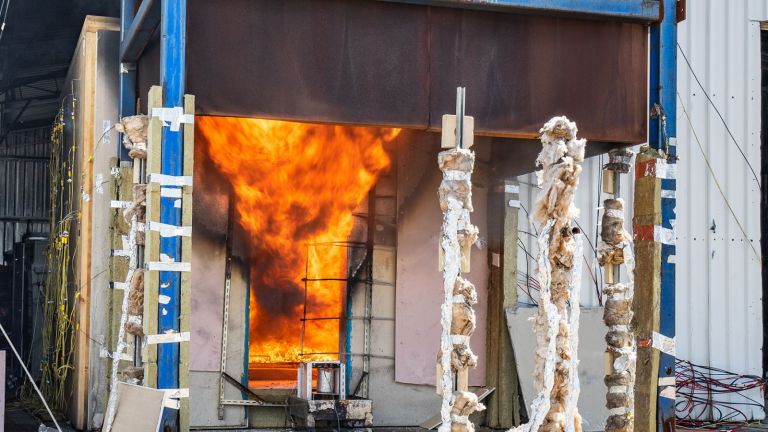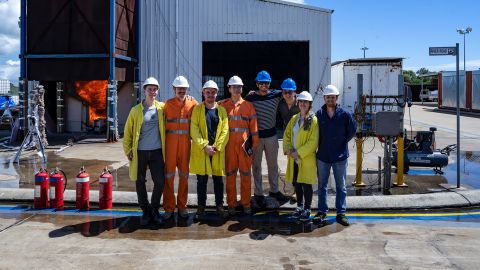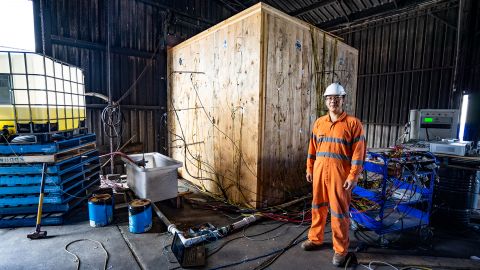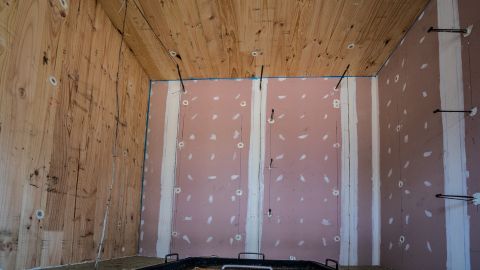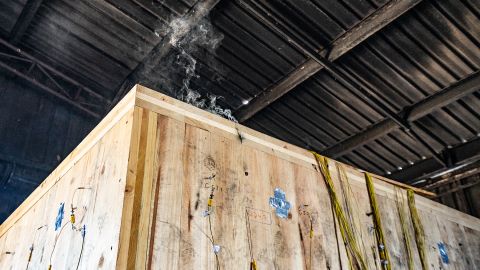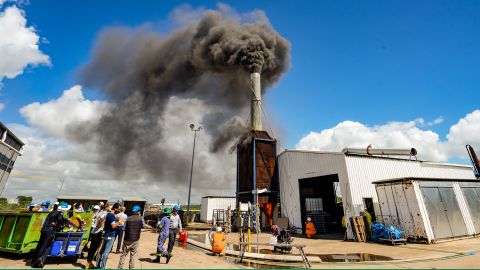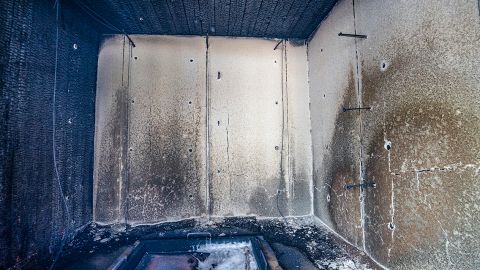The second test of the char fall-off test series for studying self-extinction at the QFES' White's Island Live Fire Training facility was completed on the 26 February for the Future Timber Hub Project “Exploring the self-extinguishment mechanism of engineered timber in full-scale compartment fires”. This project is led by Dr Juan Hidalgo (Hub Chief Investigator and Senior Lecturer at UQ) and Hangyu Xu (PhD student), and developed with the full support of The University of Queensland (UQ) Fire Safety Engineering Research Group. The project investigates the self-extinguishment mechanism of Cross-Laminated Timber (CLT) at a large-scale in order to establish design criteria for the safe use of CLT in tall-timber buildings. Partners of the project include Hyne Timber, XLam, QFES, Lendlease, Knauf and Rockwool International.
This is the fourth test in the experimental series of large-scale tests in the ARC Future Timber Hub. The aim of the test was to demonstrate the occurrence of CLT self-extinction for a limited fuel load. The team used XLam-supplied CL3/125 CLT (45-35-45 mm thick lamellae) to build a 3.4 m × 3.4 m × 3.125 m room with a wall and a ceiling exposed, and with the rest of CLT surfaces protected with Knauf fire-rated plasterboard. The fuel load corresponded to a 1m x 1m pool of kerosene fuel to generate a fully-developed compartment fire reaching gas-phase temperatures above 1,000 °C. In this test, the kerosene fire burned out at approximately 20 minutes. A few minutes after the complete consumption of the kerosene, the charred CLT wall and ceiling self-extinguished without failure of the plasterboard encapsulation.
Industry collaborators were again invited to witness this test and included representatives from Hyne Timber, Omnii, Queensland Building and Construction Commission (QBCC), Queensland Fire & Emergency Services (QFES), Red Fire Engineers, Scientific Fire Services and WoodSolutions.
"This research is fundamental for the timber and fire engineering industry", Chief Investigator, Dr Juan Hidalgo explained. “These tests help the industry to be familiar with the research practices and outcomes that are later applied in engineering design. Industry is invited to witness the test and increase their awareness of the research in this area. This crucial research needs to be transmitted to the industry effectively. The tests are also useful for engineers to understand the phenomena they are designing for and the limitations of the tools that may come up from this research.”
For more information about the 1st test of the char fall-off study click here.
